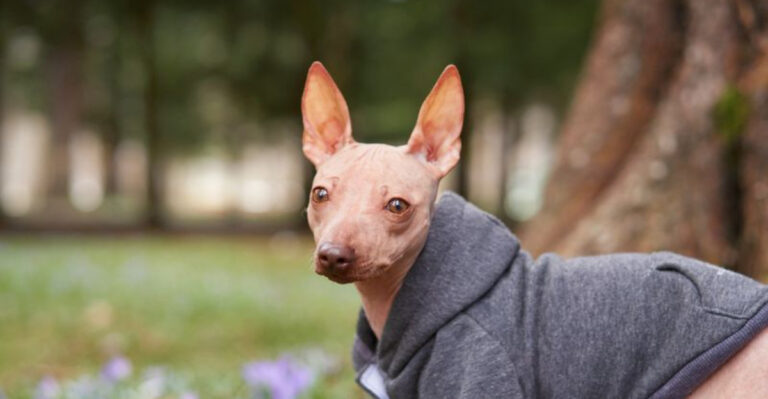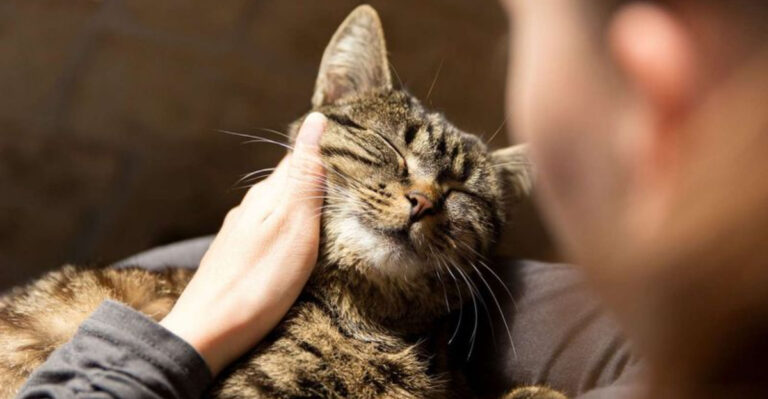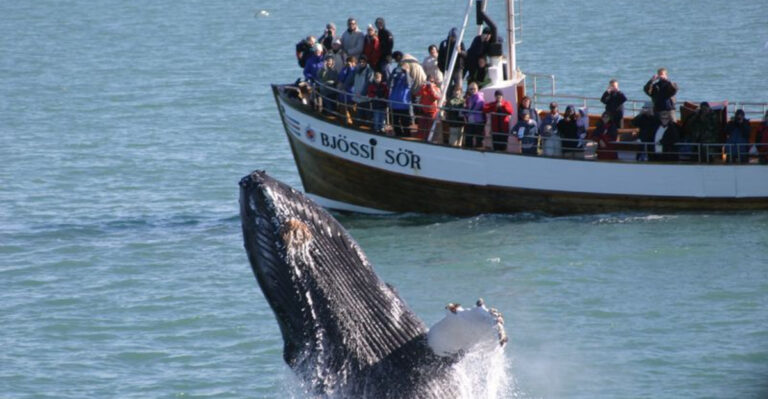20 Long-Blooming Plants To Attract Hummingbirds And Butterflies
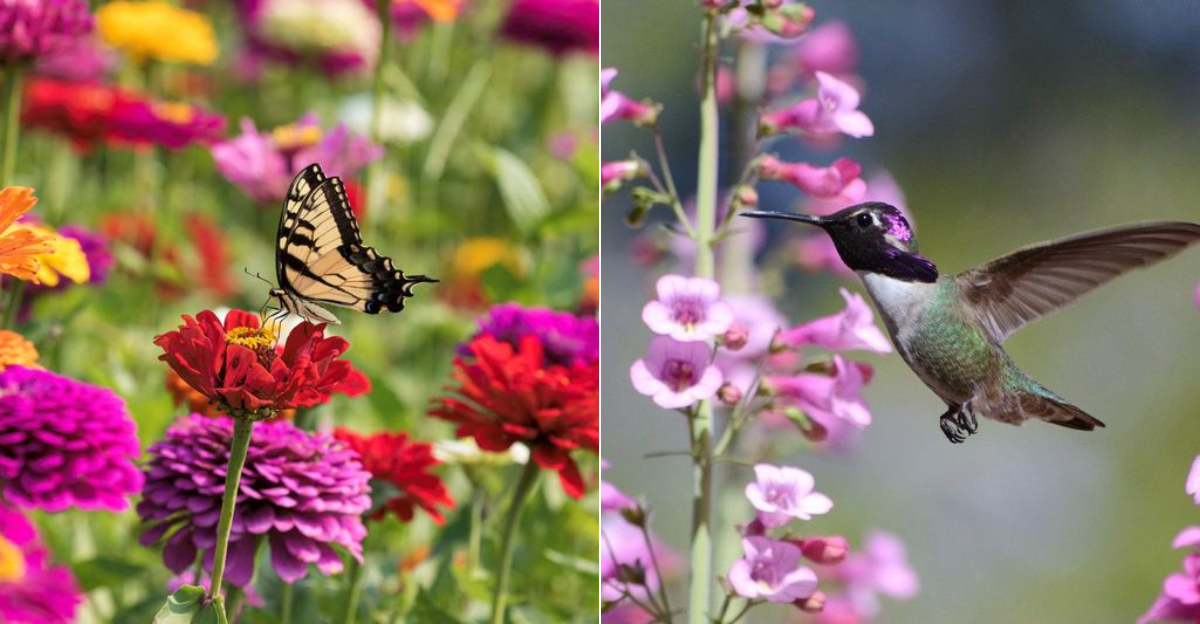
Want to transform your garden into a buzzing paradise for winged visitors? Creating a pollinator-friendly garden isn’t just beautiful—it helps support local ecosystems and brings your outdoor space to life with movement and color.
These long-blooming plants will keep hummingbirds and butterflies returning to your yard throughout the growing season, providing them with the nectar they need while giving you months of gorgeous blooms to enjoy.
1. Bee Balm (Monarda)

Crown-like clusters of vibrant red, pink, or purple flowers make bee balm an absolute showstopper from early summer through fall.
Native to North America, this fragrant perennial grows 2-4 feet tall in sunny spots. Hummingbirds can’t resist its tubular blooms filled with sweet nectar. Bonus: bee balm’s aromatic leaves smell minty when crushed and can be brewed into a relaxing tea!
2. Butterfly Bush (Buddleia)
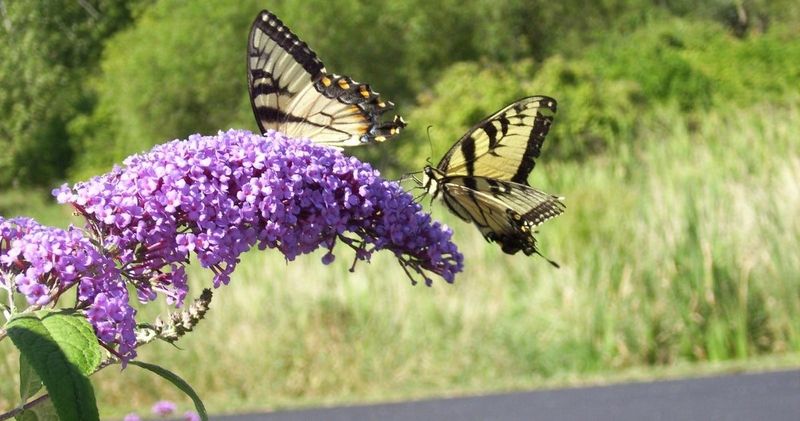
Long, arching stems covered in honey-scented flower cones make butterfly bush a summer standout. Available in purple, pink, white, and blue, these sun-loving shrubs bloom from July until frost in most regions.
The cone-shaped clusters contain hundreds of tiny, nectar-rich flowers that butterflies find irresistible. Quick-growing and drought-tolerant once established, they’ll reach 5-10 feet tall in just a couple of seasons.
3. Penstemon (Beardtongue)
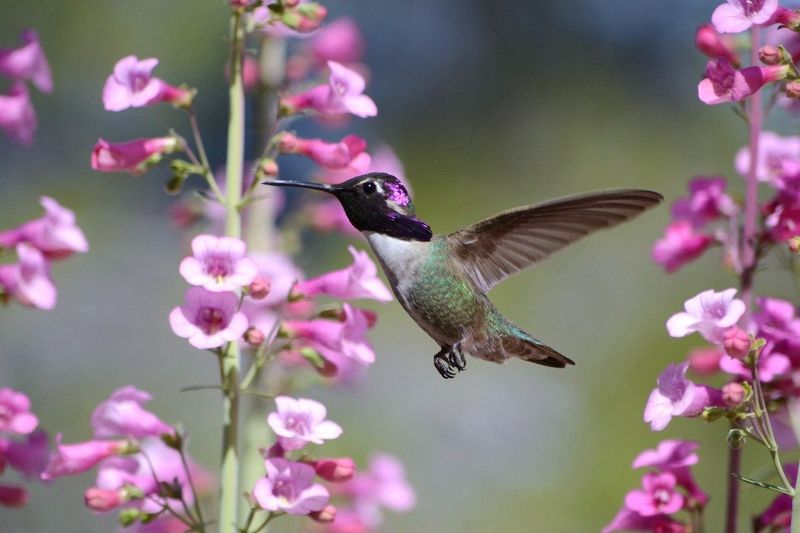
Bell-shaped blooms dangle like colorful ornaments along tall stalks from spring through summer. These North American natives thrive in hot, sunny conditions and poor soil where other plants struggle. Hummingbirds adore the tubular flowers that come in shades from scarlet to purple to white.
Once established, penstemon requires almost no care, making it perfect for busy gardeners who want maximum beauty with minimum fuss.
4. Salvia (Sage)
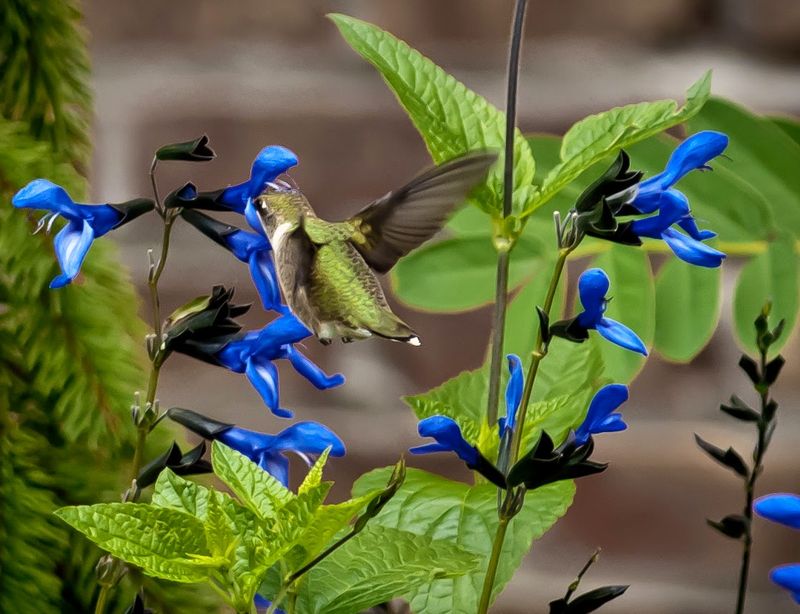
Spikes of intensely colored blooms stand tall above aromatic foliage from early summer until fall’s first frost. Salvias come in countless varieties, from compact 12-inch plants to 5-foot giants.
The tubular flowers are perfectly shaped for hummingbird bills, making them irresistible to these flying jewels. Many salvias are drought-tolerant and deer-resistant, too! Try ‘Black and Blue’ salvia for its striking dark stems and electric blue flowers.
5. Lantana
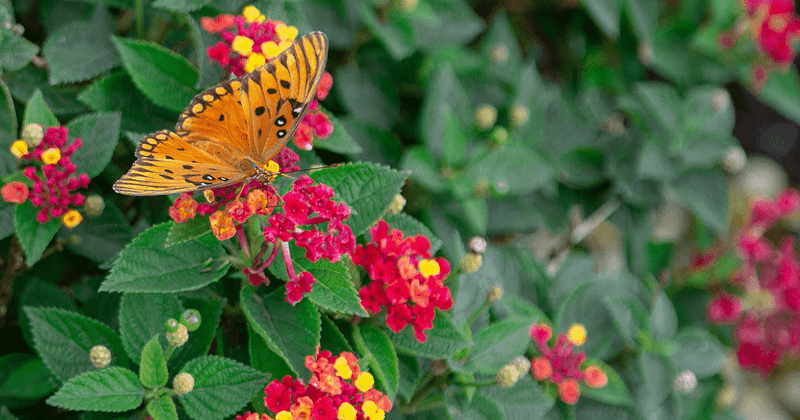
Clusters of tiny, multicolored flowers create a confetti-like display that changes hues as they age. Often starting yellow and transforming to orange, pink, or red, lantana creates a kaleidoscope effect in sunny garden spots.
Butterflies flock to these long-blooming beauties from summer until frost. Heat-loving and drought-resistant, lantana thrives when other plants wilt. The flowers’ strong fragrance and bright colors make them butterfly magnets in warm gardens.
6. Phlox

Star-shaped blooms blanket these hardy perennials from July through September, filling the air with sweet honey fragrance. Garden phlox stands tall at 3-4 feet, while creeping phlox forms colorful ground-hugging mats.
Butterflies can’t resist the nectar-rich flowers that come in shades from pure white to deep purple. Plant different varieties for a continuous bloom cycle. The tall types make excellent cut flowers, bringing their delightful scent indoors.
7. Zinnia
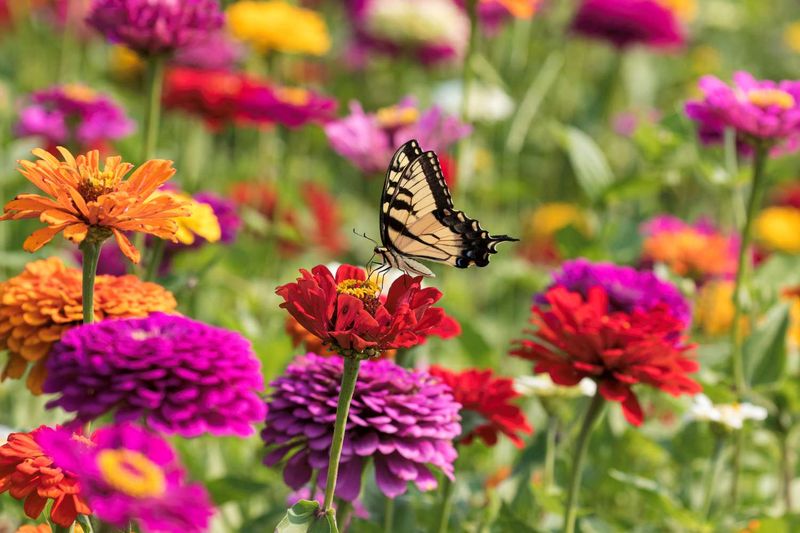
Candy-colored blooms in every shade of the rainbow keep coming all summer long when you deadhead spent flowers. From dwarf varieties perfect for borders to tall types ideal for cutting gardens, zinnias offer something for every space.
Butterflies adore these easy-growing annuals that bloom from summer until frost. Plant seeds directly in the garden after danger of frost passes. The more you cut zinnia flowers for bouquets, the more they’ll produce!
8. Agastache (Hyssop)
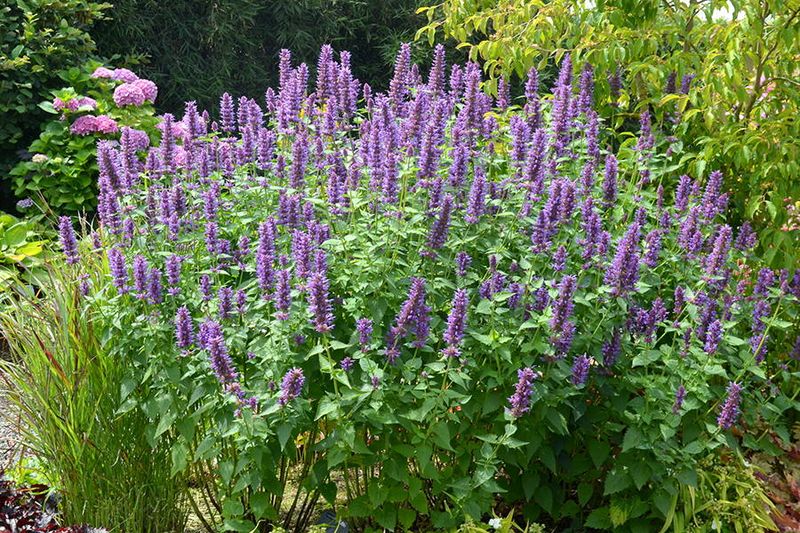
Spikes of tubular blooms in lavender, orange, or pink stand tall above fragrant, licorice-scented foliage. Agastache keeps flowering from early summer through fall, even during hot, dry spells when other plants take a break.
Hummingbirds zoom straight to these nectar-rich blooms while butterflies linger on the flower spikes. Drought-tolerant and deer-resistant, these perennials are perfect for low-maintenance gardens. The aromatic leaves add a pleasant anise scent when brushed against.
9. Coneflower (Echinacea)
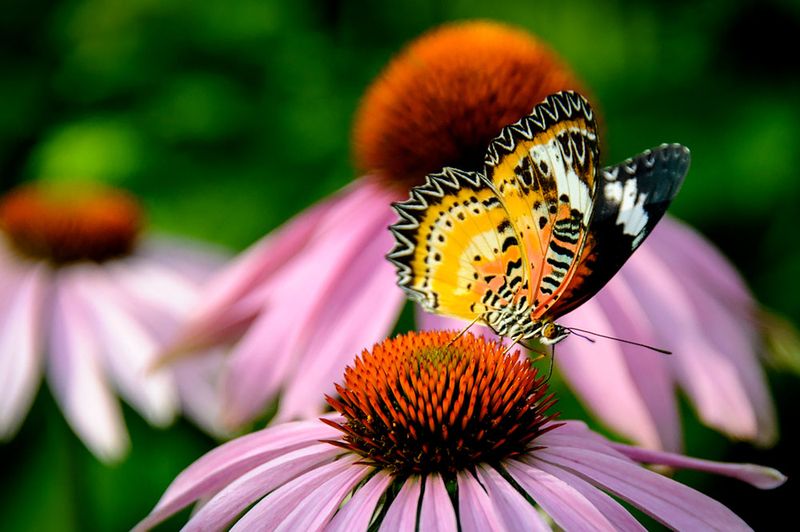
Daisy-like flowers with raised centers create landing pads for butterflies from June through October. Traditional purple coneflowers now have colorful cousins in sunset shades of orange, yellow, and red. Native to American prairies, these tough perennials laugh at drought and poor soil.
The distinctive seed heads provide winter interest and food for birds. Beyond their beauty, echinacea has medicinal properties that have been used for centuries to boost immunity.
10. Sunflower
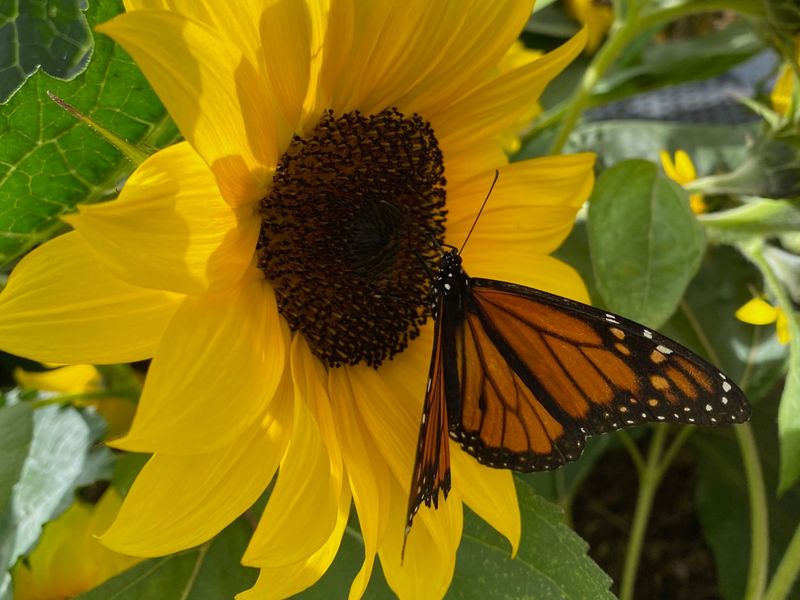
Golden faces tracking the sun’s journey across the sky create a cheerful backdrop from midsummer through fall. Beyond the classic giants, look for branching varieties that produce dozens of smaller blooms perfect for pollinators.
Butterflies love landing on the broad flower faces while birds feast on the seeds later. Native sunflower varieties bloom for weeks longer than single-stem types. Their deep roots help break up clay soil and improve drainage in problem areas.
11. Verbena
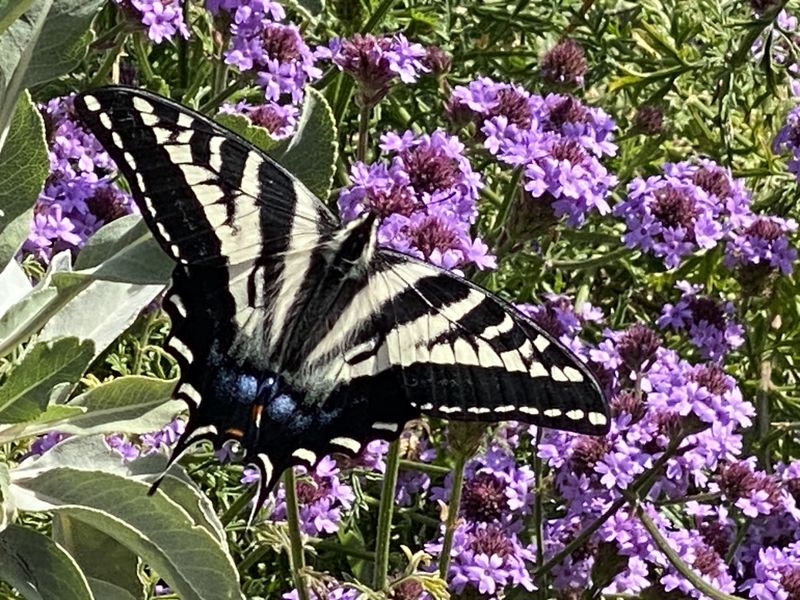
Flat-topped clusters of tiny, star-shaped flowers create perfect landing pads for butterflies from spring until frost. Tall verbena varieties reach 3-4 feet, while trailing types cascade beautifully from containers. Heat-loving and drought-tolerant, verbena keeps blooming when summer temperatures soar.
The flowers come in rich purples, pinks, reds, and white. Tall verbena adds vertical interest to garden beds, while the spreading types make excellent ground covers in sunny spots.
12. Trumpet Vine (Campsis radicans)
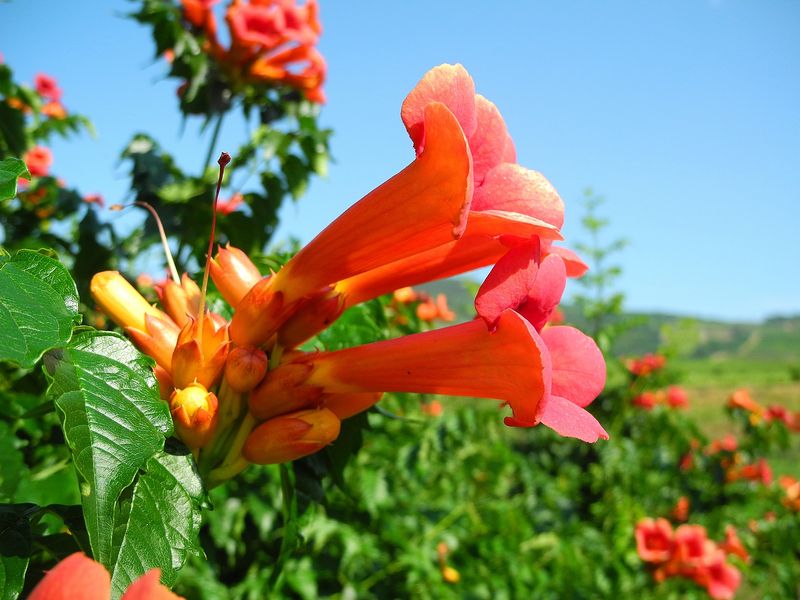
Flared, trumpet-shaped orange-red blooms dangle from this vigorous climber throughout summer. Hummingbirds perform aerial acrobatics around these nectar-filled flowers that seem designed specifically for their long bills.
Give this enthusiastic grower a sturdy support—it can climb 30-40 feet! Native to eastern North America, trumpet vine thrives with minimal care once established. The spectacular blooms appear on new growth, so prune in early spring for maximum flowers.
13. Catmint (Nepeta)
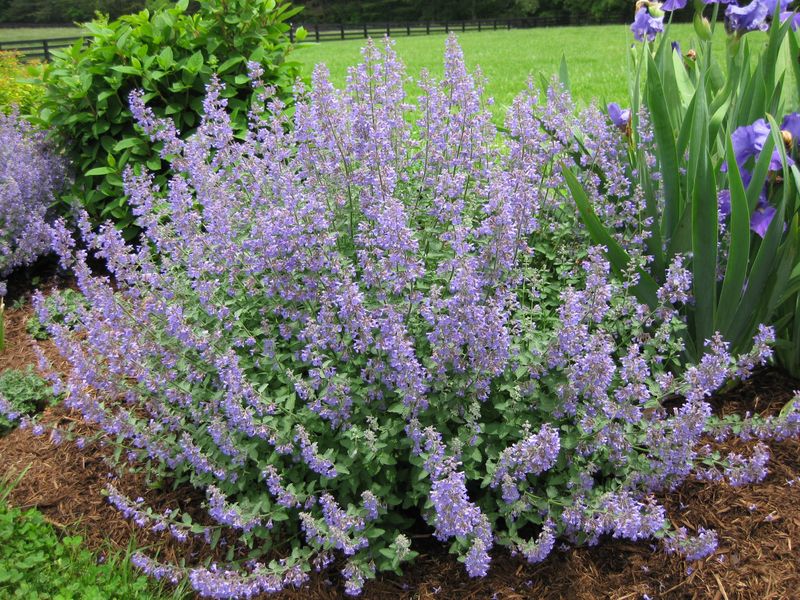
Clouds of lavender-blue flowers hover above aromatic gray-green foliage from late spring through summer. Cut back after the first flush of blooms fades, and you’ll enjoy a second show in late summer.
Butterflies flock to the nectar-rich flowers while cats roll ecstatically in the minty foliage. Drought-tolerant and deer-resistant, catmint thrives in hot, sunny spots. The soft, hazy appearance makes it a perfect companion for roses and other formal garden plants.
14. Cardinal Flower (Lobelia cardinalis)

Fire-engine red spikes rise dramatically from moist areas, creating a beacon for hummingbirds from July through September. This native wildflower grows naturally along streams and in wet meadows throughout eastern North America.
Hummingbirds can spot the brilliant red flowers from remarkable distances. Cardinal flower prefers partial shade and consistently moist soil. Plant it where you can watch the hummingbird show from a comfortable seat—they’ll visit these flowers repeatedly throughout the day.
15. Cosmos

Feathery foliage creates the perfect backdrop for daisy-like flowers that dance on slender stems from early summer until frost. Available in pinks, whites, and chocolatey maroons, cosmos adds airy height to garden beds.
Butterflies love landing on the simple, open blooms filled with accessible nectar. These easy-growing annuals self-seed readily, returning year after year. The more you cut cosmos for bouquets, the more flowers they produce, making them perfect for cutting gardens.
16. Milkweed (Asclepias)
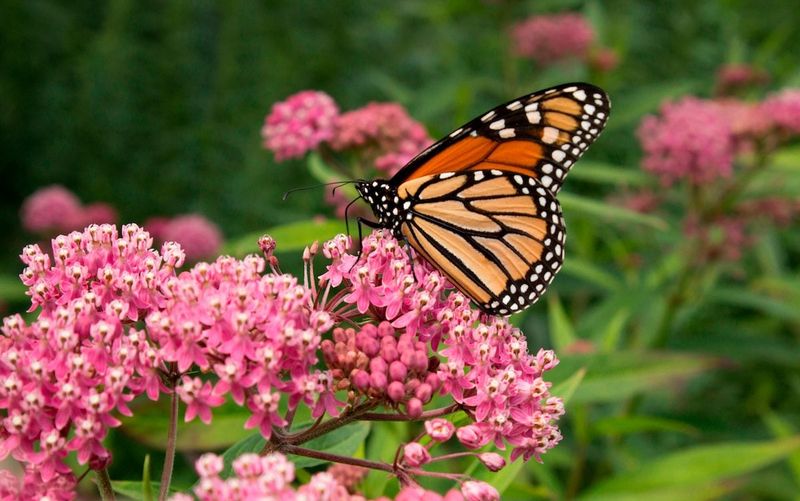
Ball-shaped clusters of star-shaped flowers in pink, orange, or white appear from midsummer through fall. Beyond beauty, milkweed serves a crucial purpose as the only host plant for monarch butterfly caterpillars. Adult butterflies sip nectar from the flowers while laying eggs on the leaves for future generations.
Native milkweed species support local ecosystems best. The seed pods that form after flowering contain silky fluff that was once used to stuff pillows and life jackets.
17. Black-eyed Susan (Rudbeckia)
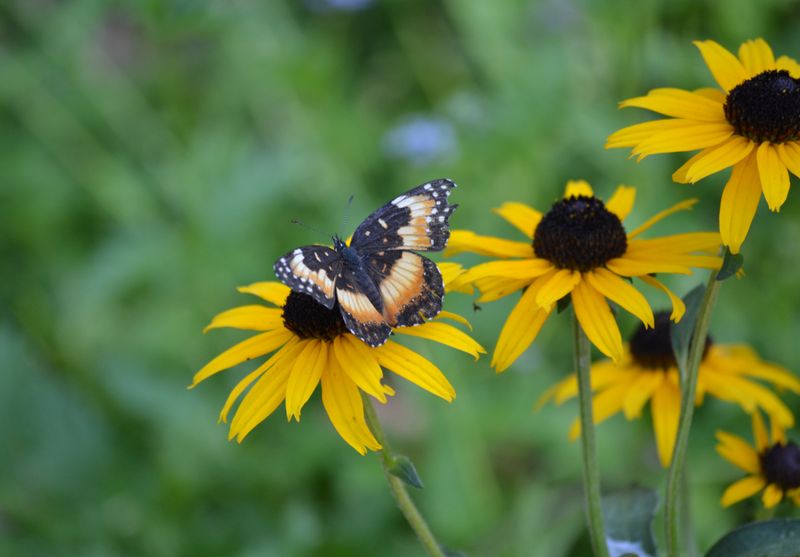
Golden petals radiating around chocolate-brown centers light up gardens from midsummer through fall. These native wildflowers have a natural, meadow-like appearance that works beautifully in cottage gardens and prairie-style landscapes.
Butterflies love the flat landing pads these flowers provide. Drought-tolerant and deer-resistant, black-eyed Susans thrive with minimal care. Leave the seed heads standing through winter to feed hungry birds and add structural interest to the winter garden.
18. Fuchsia
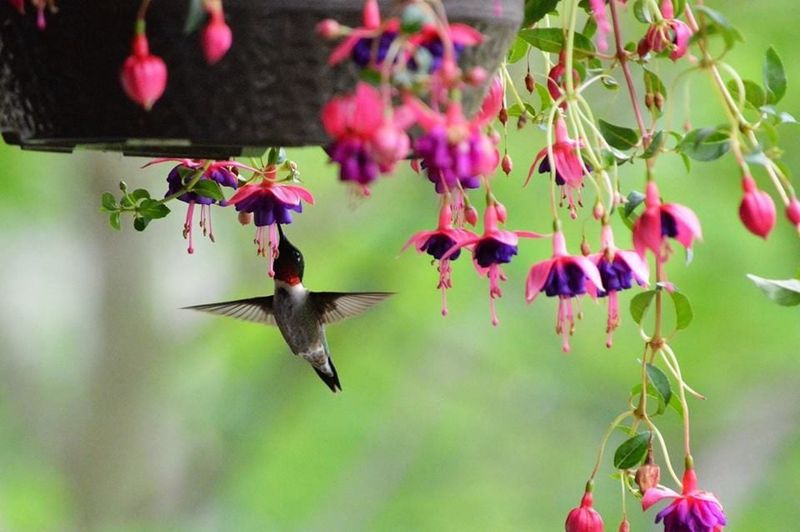
Dangling, bell-shaped blooms in jewel tones create living ornaments from spring through fall. The unusual two-toned flowers look like tiny ballerinas dancing on slender stems, adding whimsy to containers and hanging baskets.
Hummingbirds perform aerial displays around these nectar-rich blooms. Fuchsias prefer cooler temperatures and protection from hot afternoon sun. In mild climates, hardy varieties return year after year, while in colder regions, they make spectacular annuals.
19. Petunia
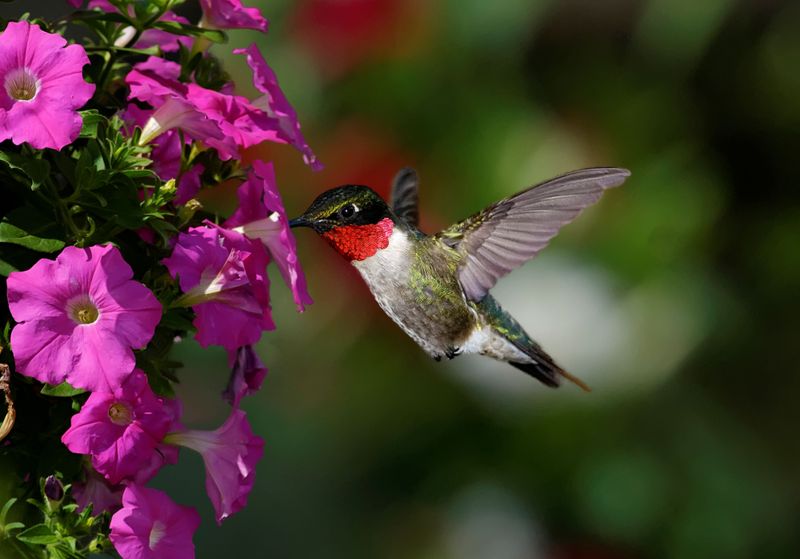
Trumpet-shaped blooms in every color imaginable cover these popular annuals from spring until frost with proper care. Modern varieties bounce back after rain instead of turning to mush like older types. Hummingbirds particularly love the deep purple, red, and hot pink varieties.
For maximum blooms, remove faded flowers and fertilize regularly. The night-scented varieties release a sweet vanilla-like fragrance after sunset, attracting fascinating sphinx moths that hover like miniature hummingbirds.
20. Penta
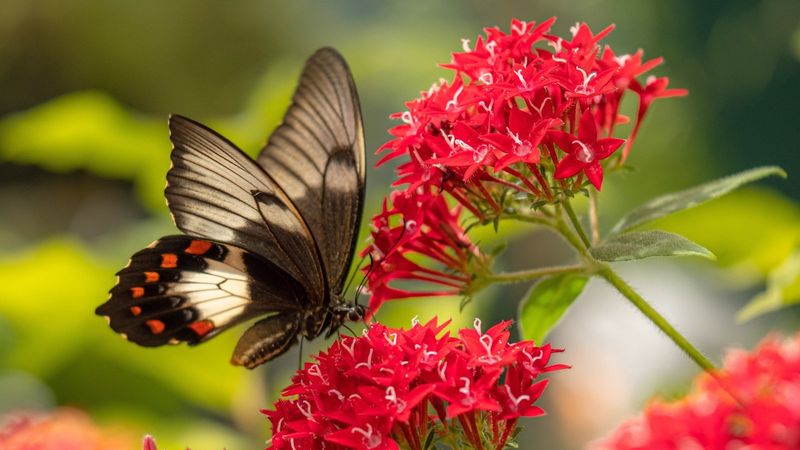
Star-shaped flowers arranged in clusters resembling five-pointed stars give this tropical beauty its name. Available in red, pink, purple, and white, pentas bloom continuously from spring through fall in warm climates.
Butterflies and hummingbirds can’t resist the nectar-rich blooms. Heat-loving and humidity-tolerant, pentas thrive when summer temperatures soar. The red varieties are particularly attractive to hummingbirds, while butterflies seem equally happy with any color.

